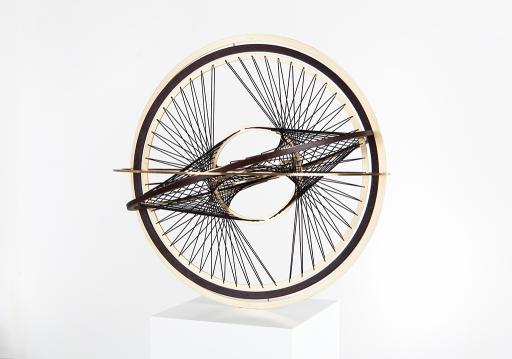Pion, Timo Nasseri
Artwork Overview
Timo Nasseri, artist
born 1972
Pion,
2015
Where object was made: Berlin, Germany
Material/technique: strings; wood; bronze
Dimensions:
Object Height/Width/Depth (Height x Width x Depth): 65.5 x 65.5 x 65.5 cm
Object Height/Width/Depth (Height x Width x Depth): 25 13/16 x 25 13/16 x 25 13/16 in
Object Height/Width/Depth (Height x Width x Depth): 65.5 x 65.5 x 65.5 cm
Object Height/Width/Depth (Height x Width x Depth): 25 13/16 x 25 13/16 x 25 13/16 in
Credit line: Courtesy of the artist and Sfeir-Semler Gallery, Hamburg, Germany
Accession number: EL2016.008
Not on display
If you wish to reproduce this image, please submit an image request



